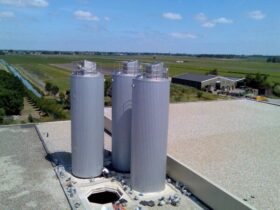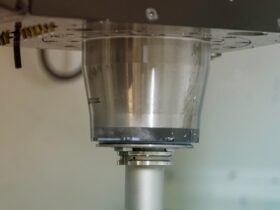Lightning kills people: anywhere from 6,000 to 24,000 people a year, according to numbers derived from the rates of lightning strikes around the world in a 2016 study. Lightning also causes power outages, fires, and property damage. Researchers have been working to expand protection for people and property from lightning strikes ever since Ben Franklin first thought of lightning rods to protect homes by grounding lightning strikes.
Enter the laser lightning rod project, an effort by a consortium of European universities, consultants, and industrial partners. The results created big news in science: laser lightning rods could work!
Ben Franklin Had a Great Idea, But…
The classic lightning rod, attributed to Ben Franklin, can direct lightning away from structures and send the electrical charge straight into the ground. The problem with a traditional lightning rod is that its range is relative to its height: a 15-foot lightning rod can only protect an area with a 15-foot radius. That’s impractical for large installations like power plants, airports, and wind farms, so researchers devised a way to protect a broader area.
Testing a Laser Lightning Rod
By acting on lab-based evidence that lasers might be able to deflect lightning, scientists working with the consortium developed a car-sized laser weighing three tons and measuring nearly five feet wide and just over 26 feet long. They hauled it via gondola and helicopter near a communications tower atop one of Europe’s most lightning-strike-prone locations: Mount Säntis in Switzerland. That 400-foot tall tower is on the receiving end of about 100 lightning strikes a year.
The researchers fired super-high speed pulses of laser light into the clouds above the tower during stormy weather. Light filaments form within the beam when laser light fires into the atmosphere. These filaments ionize oxygen and nitrogen in the air, causing the molecules to emit free electrons and form a fourth state of matter known as plasma. Plasma conducts electricity, meaning it attracts lightning.
In the summer of 2021, the consortium recorded images of the beam diverting four lightning strikes for 60 meters along the laser and documented two other diversions with data but not images.
A Long Road to Practical Applications
Although the project demonstrated that laser lightning rods could work, don’t go rushing to the home supply store to find a household laser lightning rod. The researchers estimate that it will take an additional 10–15 years to create a way to use this technology in practical applications.
One of the most obvious yet thorniest problems with the laser lightning rod is the danger to air traffic. When the big laser was operating in Switzerland, the consortium worked with officials to impose a no-fly zone around the experimental area. Figuring out how to deploy laser lightning rods around airports while protecting pilots and flights is a major logistical issue.
In the meantime, scientists in labs all over the globe continue to experiment with lasers. They select laser beam profilers to ensure their instruments generate a beam at the right intensity, diameter, and shape. Their ongoing experiments will surely find many other practical applications for lasers.














Leave a Reply